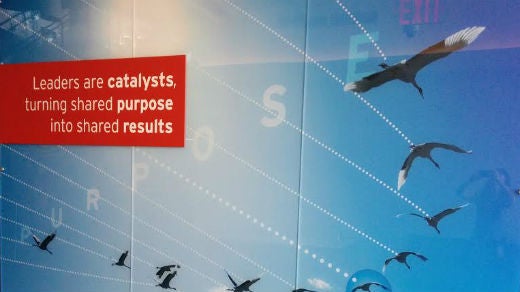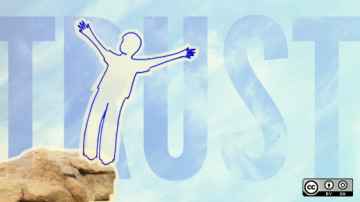Adaptability is a key principle in open organizations. Open organizations remain flexible in the face of rapidly changing environmental conditions—especially by implementing systems for monitoring and responding to feedback loops while addressing complex issues.
Yet the Open Organization Definition says relatively little about the way adaptability functions as a core value of open leadership. In this article, I'll explain how open leaders can embrace adaptability—and how it can enhance their leadership abilities while at the same time leading to more effective decision-making.
Three leadership considerations
In open organizations, "leaders" need not necessarily be "managers." Leaders can arise anywhere, and leadership is an ability anyone can enact.
But under what conditions should a leader choose to lead? And how should that leader choose to lead?
Consider these three issues when determining the best method of leadership in an open organization:
1. The problem or opportunity
Leadership emerges as a response to a problem. Is there a problem that must be addressed? If so, what is it? Can we just ignore it, thinking it will solve itself over time?
Let's say you are part of top management in a company that's losing sales rapidly. One opinion regarding this trend toward loss of sales is that it's "just cyclical," that sales will come back without our having to change our current activities. Perhaps no new vision or leadership is necessary. Another opinion might be that something must be done differently, and someone should take the responsibility to execute it.
First of all, everyone must agree that something must be done. The issue next is identifying the exact nature of the problem.
Returning to our example above: Is a decline in sales the result of a competitive threat, a product quality issue, a production defect, a decline in customer demand, or something else entirely? That must be clarified and detailed before a solution can be selected. Does someone have the experience, reputation, knowledge, and skills to see the problem at the necessary level of detail?
This same process of identification applies to business opportunities as well as business problems. Is there a business opportunity that we just can't ignore?
The solution
If the problem has been clarified and detailed, and we know that some action must be taken, the next question is this: Do we have someone who is willing and able to select the best solution? Many strategies are possible, but which one is best?
Returning once more to the example above: Which solution is best to get sales growth back on track? Does anyone in the organization have the necessary experience and expertise in selecting ideal sales strategies?
Execution
Let say we know what the best solution is. Our next question will be this: Do we possess the skills and resources to implement or execute that best solution (or know where to get them)?
When determining the ideal management style, consider those three issues. First, is there a detailed problem that must be addressed or a detailed opportunity that must be explored? If no, we can stop right here. If yes, we must explore it further. Assuming there is a problem that must be addressed, is there a clearly defined solution, or does someone know exactly what the solution is? And finally, are the resources, skills, procedures, and reputations available for efficiently executing on the decided solution?
If those traits are available (or can easily be found), then the organization is facing what Ronald Heifetz, Alexander Grashow, and Marty Linsky—in their book The Practice of Adaptive Leadership—call a "technical challenge." Technical challenges, the authors argue, can easily be handled through conventional, "top-down" management styles engaging the most appropriate, knowledgeable people.
Unfortunately, in more and more cases today, problems are not obviously or clearly defined. The selection of the solution is not so easy. And the implementation of that selected solution does not follow a clear process with discrete steps, procedures, and guidelines.
So how should leaders act differently in the face of a more ambiguous challenge?
Thinking adaptively
If problems, solutions, and execution methods are not immediately understood, then the organization faces what the authors of The Practice of Adaptive Leadership call an "adaptive challenge." And this kind of challenge requires an "adaptive leadership" style.
The research these authors have done has lead them to the same conclusions that the open organization community has reached: Open organizations, with a bottom-up management style, require a certain type of leadership, similar to "adaptive leadership" the authors define. Over and above my personal experience, I found the research in this book helpful for understanding how adaptability might apply to leadership practices.
Before the authors explain "adaptive leadership," they introduce the situations in which it's best applied. Let me explain in more detail what I mentioned above. Consider three kinds of challenges: "technical challenges," "technical and adaptive challenges," and fully "adaptive challenges."
Technical challenges
As I've already mentioned above: These challenges are clearly defined, and leaders know in precise detail what the problems are. On top of that, they know exactly what to do to find a solution to the challenge and how to execute that solution. In this case, a top-down management style would be a fine way to address these challenges.
Technical and adaptive challenges
With these challenges, there is a clear understanding of the issue, but learning is required to reach an ideal solution. Some top-down authority would be helpful for tackling them—but front-line stakeholders (people affected by the challenge and in need of a solution) must be involved to explore what the ideal solution could be and how to execute it.
Adaptive challenges
These challenges are more complex. There's a vague knowledge of the challenge that must be addressed, but there is no expertise to clarify it. Learning is required just for identifying and clarifying the exact nature and magnitude of the challenge. Once it's identified, even further learning is required to come up with the ideal solution. And lastly, once the best solution is determined, then procedures, resources, and skills must be introduced to execute that solution. Front-line stakeholders must address these challenges. And within that group of stakeholders, one person must take the lead and facilitate the process. The authors call this leader the "adaptive leader." (Figure 1, below, summarizes these challenges and potential leadership responses.)
With authority
Leadership effectiveness hinges on authority—something that leaders who emerge spontaneously in response to a problem might not always "officially" have. The Practice of Adaptive Leadership defines several types of leaders, namely leaders with "formal authority" and/or "informal authority," and people that are "adaptive leaders" and/or "stakeholders." The authors note important considerations regarding all of them.
Formal authority
People with formal authority can officially ask others to do something; they're in a position to influence a proposal to solve an adaptive challenge. People with a great deal of formal authority could possibly have little informal authority. They may have the ability to stop a viable project or even start an unviable project. Simply, they may have little ability to address the adaptive challenge and execute on it.
Informal authority
People with informal authority are experts on specific issues. This is what some individuals unofficially bestow upon or expect of a person because of his or her reputation, trustworthiness, experience, skills, and expertise. On specific issues, people with informal authority possess high degrees of respect, skill, and expertise among all stakeholders and others (particularly regarding adaptive challenges). These individuals can unofficially influence opinions. They can help to turn "adaptive" challenges into "technical" challenges (as defined above).
Adaptive leaders, then, facilitate possibly many people with informal authority in decision-making, learning, and execution on issues for which there is no single specialist or expert on which all people can totally rely. These leaders may or may not have formal authority, but having formal authority would be helpful to them. "Stakeholders," on the other hand, are the key group of representatives or individuals participating in solving an adaptive challenge. They are directly impacted by it and want to do something about it. They're the front-line, trial-and-error-oriented people who generate the most learning about problems the organization faces. Directly or indirectly, these stakeholders have strong incentives to address the adaptive challenge. People with formal authority in the organization should encourage them to address this adaptive challenge.
|
Kind of Challenge |
Problem definition |
Final Ideal Solution & Execution |
Central positions to address challenge |
|
Technical with full expertise available |
Clearly defined and know the problem |
Clearly defined and know how to execute solution |
Formal authority or specialist on problem |
|
Technical and adaptive (total expertise not available to solve challenge) |
Clearly defined and know the problem |
Requires learning in finding the solution and executing that solution |
Formal authority, some informal authority and stakeholders |
|
Adaptive challenges with no expertise on the issue, exploration required |
Requires learning to identify and clarify the problem |
Requires learning in finding the solution and executing that solution |
All stakeholders (with something to gain or lose), include one adaptive leader |
Figure 1: Organizational challenges and leadership responses. Courtesy of Ron McFarland (CC BY-SA), and modified from The Practice of Adaptive Leadership by Ronald Heifetz, Alexander Grashow, and Marty Linsky, p. 20.
Leadership without formal authority
Some degree of leadership is required for addressing any organizational challenge—even ones for which there is no clearly visible, organizational "formal authority." Adaptive leadership is required for front-line, adaptive challenges. Anyone who takes on this "adaptive leadership" role will need to address these "adaptive challenges" using skills the open organization community has chronicled. For example, in the comments of a previous article, I mentioned a 12-step procedure for determining an organization's purpose in a 15-word statement. Someone could apply that same procedure when answering the three questions I introduced at the start of this article. I've also made a presentation on adaptive leadership and delivered it several times.
If an open organization applied adaptive leadership techniques, it could turn "adaptive challenges" into "technical challenges," creating an organization that is continually developing and strengthening.







Comments are closed.